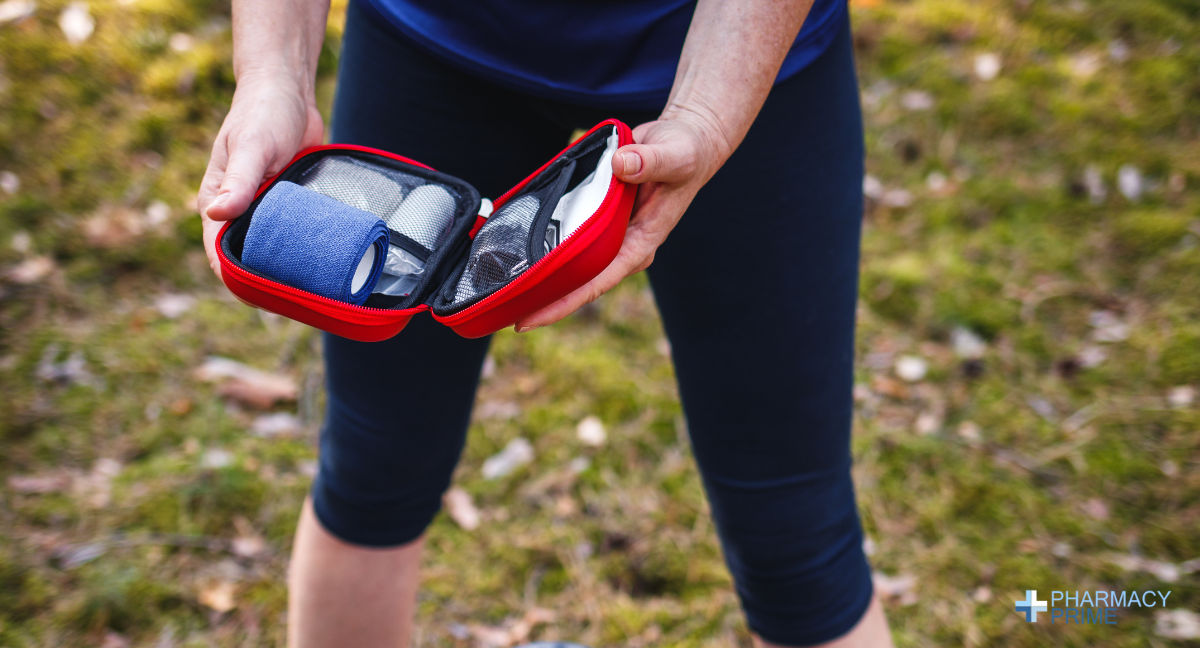Accidents can happen at any time, and it's important to be prepared. A first aid kit is an essential item to have in your home, workplace, or when you're on the go. A well-stocked first aid kit can help you treat minor injuries and prevent them from becoming more serious. In this article, we will guide you through the essential items that should be in your first aid kit and how to use them properly.
Storage:
It's important to store your first aid kit in a dry and cool place out of the reach of children. Make sure to check the expiration dates of all the items in your kit regularly and replace any expired items.
Bandages and dressings:
Adhesive dressings are an essential item in any first aid kit. These dressings can be used to cover cuts and grazes and prevent them from becoming infected. Sterile gauze dressings come in different sizes and should be used to clean and dress deeper wounds. To apply a sterile gauze dressing, clean the wound with antiseptic cream, and then place the dressing over the wound, making sure it covers the entire area.
Triangular bandages can be used to support broken bones, hold dressings in place, or to create a sling. Crepe rolled bandages are used to support sprains and strains or to hold dressings in place. Sterile eye dressings are used to cover and protect the eyes in case of injury.
Eye essentials:
Eye wash and eye bath are essential items in any first aid kit. Eye wash is used to rinse out foreign objects or chemicals from the eyes. To use an eye wash, tilt your head backward and gently squeeze the bottle to release the solution into your eye. An eye bath is used to wash out the eyes in case of a chemical burn or when foreign objects have entered the eyes.
Minor eye injuries, such as shampoo or dust in your eye, often get better on their own within a day. However, you should get medical help if you get a chemical in your eye or if something pierces it.
Go to A&E or call 999 if:
- A strong chemical, such as oven cleaner or bleach, is in your eye–keep rinsing your eye with water while waiting for medical help
- A sharp object pierces your eye
- Something has hit your eye at high speed–for example, while using power tools or mowing the lawn
- There are changes to your sight after an eye injury
- You have a headache, high temperature, or sensitivity to light
- You’re feeling sick or being sick after an eye injury
- You cannot move your eye or keep it open
- Blood or pus is coming from your eye
Creams:
Antiseptic cream is used to clean and disinfect cuts and grazes. Hydrocortisone cream can be used to soothe and relieve insect bites, rashes, and eczema. Insect bite cream can be used to relieve the itching and swelling associated with insect bites.
Medicines:
Antihistamines can be used to relieve allergic reactions such as hay fever, insect bites, and hives. Painkillers such as paracetamol or ibuprofen can be used to relieve pain associated with headaches, toothaches, and other minor injuries.
Tools:
Tweezers can be used to remove splinters or foreign objects from the skin. Scissors can be used to cut dressings or tape. A thermometer can be used to check for fever. A flashlight can be used to examine wounds in low light conditions.
Hygiene:
Hand sanitizer and disposable gloves are essential items in any first aid kit to prevent infection when treating wounds.
Extra items:
If you have infants, it's important to have items such as baby wipes, teething gel, and diaper rash cream in your first aid kit. If you're travelling, make sure to pack motion sickness tablets, sunscreen, and insect repellent.
A well-stocked first aid kit can help you treat minor injuries and prevent them from becoming more serious. Make sure to regularly check the contents of your first aid kit and replace any expired items. By being prepared, you can handle any unexpected injuries or accidents with confidence.

